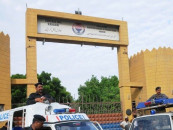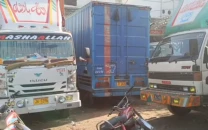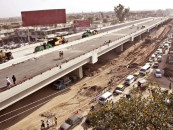Drought threatens valley's natural allure
Khabeki Lake dries up, Kanhatti Bagh at risk

The picturesque Soon Valley, home to historic and ecologically significant sites like Khabeki Lake and Kanhatti Bagh, is facing an environmental crisis due to prolonged drought, rampant deforestation, and repeated forest fires.
Khabeki Lake — an internationally recognised Ramsar site and vital habitat for migratory water birds — has completely dried up.
Once a thriving tourist attraction offering boating and wildlife viewing, the lake now stands barren. With water levels plummeting, fish populations are vanishing and tourism is rapidly declining.
The situation is equally alarming at Kanhatti Bagh, a British-era botanical garden and a major draw for tourists during holidays such as Eid.
The spring that feeds the garden has dwindled to a trickle, endangering more than 25 species of fruit-bearing trees, including loquat and Late Valencia. The garden, which boasts over 100 species of trees, is at serious risk of ecological collapse.
Despite the escalating crisis, the District Council Khushab has yet to take substantive steps to preserve these vital sites.
Experts suggest the construction of a mini-dam on Nala Souk near Kanhatti Bagh to create a sustainable water reservoir.
Meanwhile, locals are calling for immediate reforestation efforts and stricter enforcement against vehicle washing, plastic pollution, and illegal woodcutting near the lake.
Forest fires have ravaged more than 1,500 acres in Rakh Khabeki over the past two years, severely disrupting the habitat of Punjab Urial, partridges, and other wildlife. The cause of these fires remains untraced, but their environmental impact is undeniable.
Public and environmental advocates have appealed to the Sargodha commissioner of and Khushab deputy commissioner to take urgent action. Without immediate intervention, they warn that Soan Valley may lose not only its ecological balance but also its national and international standing as a hub of natural beauty and tourism.




















COMMENTS
Comments are moderated and generally will be posted if they are on-topic and not abusive.
For more information, please see our Comments FAQ